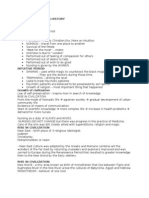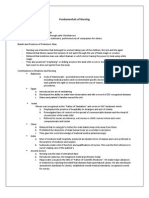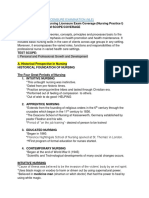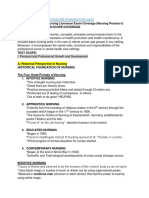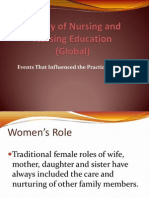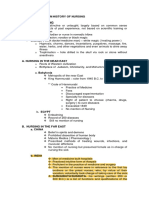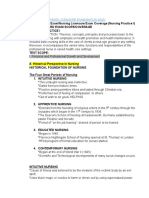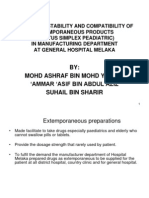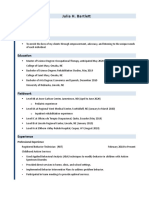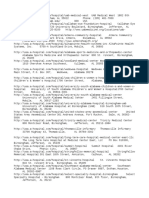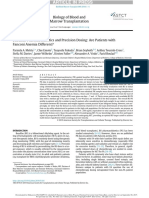0% found this document useful (0 votes)
85 views6 pagesNcma Notes - Week 2
The document traces the evolution of nursing from ancient times through the present day. It begins with the Intuitive Period in ancient civilizations where nursing was instinctive and based on compassion. The Apprentice Period began in the 6th century and lasted through the 18th century, during which nursing training was done through on-the-job apprenticeships. The Educational Period started in the 19th century with the establishment of nursing schools and standardized education programs. Nursing continues to evolve through the Contemporary Period to the present day.
Uploaded by
Elleine Jade TinidoCopyright
© © All Rights Reserved
We take content rights seriously. If you suspect this is your content, claim it here.
Available Formats
Download as PDF, TXT or read online on Scribd
0% found this document useful (0 votes)
85 views6 pagesNcma Notes - Week 2
The document traces the evolution of nursing from ancient times through the present day. It begins with the Intuitive Period in ancient civilizations where nursing was instinctive and based on compassion. The Apprentice Period began in the 6th century and lasted through the 18th century, during which nursing training was done through on-the-job apprenticeships. The Educational Period started in the 19th century with the establishment of nursing schools and standardized education programs. Nursing continues to evolve through the Contemporary Period to the present day.
Uploaded by
Elleine Jade TinidoCopyright
© © All Rights Reserved
We take content rights seriously. If you suspect this is your content, claim it here.
Available Formats
Download as PDF, TXT or read online on Scribd
/ 6














